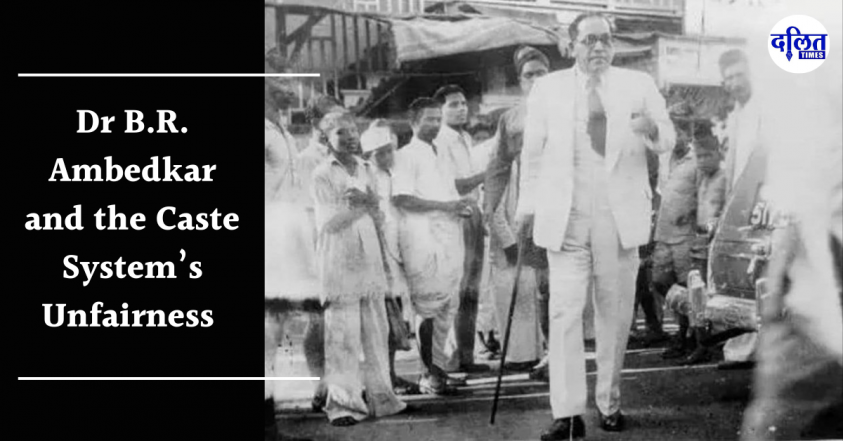The recent Lok Sabha elections results and the post-election analyses have revealed a picture much different than the predictions. All over the country, a majority of the SC, ST, and OBC vote has gone to parties besides the BJP, which has consequently led to many explanations for this phenomena.
Story: Anjali Soni
Edit: Nitya Kaimal
In recent political developments in India, the Constitution has taken centre stage in political rhetoric and symbolism. Opposition leaders have prominently displayed copies of the Constitution, signifying a mandate to “Save the Constitution,“ particularly for marginalised and oppressed communities. This movement has raised the question: did a constitutional conscience drive much of the Dalit and OBC vote in the recent Lok Sabha elections?
Harish Wankhede’s Perspective
Harish Wankhede, an assistant professor at Jawaharlal Nehru University, argues that the Opposition, particularly the Congress and its allies, leveraged constitutionalism as a strategic ideological tool to challenge the dominant Hindutva narrative of the BJP. The decline of social justice parties like the Bahujan Samaj Party (BSP) and the Rashtriya Janata Dal (RJD) created a political vacuum. The Congress capitalized on this by framing the BJP as a threat to the ideals of Indian democracy, using the Constitution as a central symbol of this narrative.
Wankhede highlights that in states with a strong presence of Ambedkarite socio-cultural and political movements, constitutionalism served as a unifying force. This force connected local grievances and resentment towards the BJP’sfailure to deliver on economic and social promises, with a broader narrative of constitutional protection. The BJP’s dominant presence over the last decade necessitated a counter-narrative, and constitutionalism provided a compelling alternative.
Also read: Why did Dalits not vote for BJP ?
Ravikant Kisana’s Insights
Ravikant Kisana, an associate professor at Woxsen University, provides a broader perspective, noting that while the constitutional narrative played a role, local and immediate issues significantly influenced voting patterns. He acknowledges that the idea of the Constitution being threatened resonated differently across various states and communities.
Kisana points out that in states like Uttar Pradesh (U.P.) and Gujarat, the narrative of constitutionalism had varied impacts. For instance, in UP, despite a decline in BSP support, the party retained a significant vote share, indicating that concerns about constitutionalism influenced its ideological voters. However, the success of the constitutional narrative also
depended on local dynamics, such as the effectiveness of the BJP’s governance in those regions. In areas where the BJP could deliver public goods effectively, the constitutional narrative was less influential.
Akhilesh Yadav’s PDA Formula
Akhilesh Yadav, leader of the Samajwadi Party (SP), implemented the PDA (Pichhda, Dalit, Alpsankhyak) formula, which sought to unite the backward classes, Dalits, and minorities. This strategy is seen as a crucial factor in the SP’simproved performance in the 2024 elections, particularly in the Braj region. The SP’s tally increased to three seats from one in 2019, while the BJP’s seats reduced from seven to five. This success is attributed to Yadav’s effective mobilization of these communities, leveraging their concerns about constitutional protection and social justice.
Yadav’s PDA formula capitalized on the sense of disenfranchisement among the backward classes, Dalits, and minorities, creating a coalition that resonated with their shared experiences and aspirations. This approach not only challenged the BJP’s dominance but also highlighted the potential for alternative political alliances to address the specific needs of these communities.
Also read: BJP’s Dalit Leaders Express Dissatisfaction After Selection of Cabinet Ministers
The analysis suggests that a constitutional conscience did play a significant role in driving the Dalit and OBC vote, but its impact was nuanced and varied across different regions and communities. The Opposition’s use of constitutional symbolism effectively resonated with voters concerned about social justice and representation. However, local issues and the effectiveness of party strategies, such as Akhilesh Yadav’s PDA formula, were also crucial in shaping electoral outcomes. This multifaceted approach underscores the complexity of voter behaviour in India’s diverse political landscape. The interplay between national narratives and local realities highlights the dynamic nature of Indian democracy and the ongoing struggle for representation and justice among marginalized communities.



